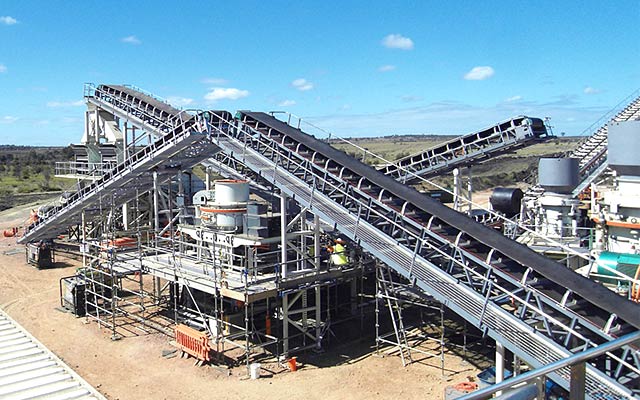Crushing and screening limestone aggregate is an essential process in the construction industry, particularly in the production of concrete and asphalt. This process involves breaking down the limestone into various sizes and then separating them based on their size and quality. In this article, we will explore the crushing and screening process for limestone aggregate in detail.
Limestone is a sedimentary rock composed mainly of calcium carbonate. It is widely used as a building material due to its versatility and durability. When used as aggregate in construction, limestone provides strength to concrete and stability to road surfaces. However, before it can be used, the limestone needs to be crushed and screened to meet the required specifications.
The first step in the process is primary crushing. Large pieces of limestone are fed into a jaw crusher, which reduces the size of the material to manageable chunks. Jaw crushers are commonly used for primary crushing due to their high capacity and ability to handle large-sized rocks. The crushed limestone is then conveyed to a secondary crusher for further size reduction.

In the secondary crushing stage, cone crushers or impact crushers are often used. These crushers further break down the limestone into smaller pieces. Cone crushers are preferred for their ability to produce a well-graded product with a cubical shape. On the other hand, impact crushers are effective in producing a high percentage of fine aggregates.
After the crushing stage, the limestone aggregate is screened to separate it into different sizes. Vibrating screens are commonly used for this purpose. The screens have different-sized openings or meshes, allowing the aggregate to pass through while retaining larger particles. By using different screens, the desired range of sizes can be achieved. The separated limestone aggregate is then stored in different stockpiles or bins according to its size.
During the screening process, it is essential to ensure that the limestone aggregate meets the required specifications. These specifications may include particle size distribution, grading limits, and specific quality requirements. Quality control measures, such as sieve analysis, are employed to verify that the aggregate meets the standards set by regulatory bodies or project specifications.
Crushing and screening limestone aggregate offers several benefits. Firstly, it allows for the production of aggregates of different sizes, which can be tailored to specific construction applications. Fine aggregates are commonly used in concrete production, while larger aggregates are suitable for road base and other structural applications.
Secondly, the crushing and screening process helps remove impurities and contaminants from the limestone aggregate. This enhances the quality of the final product, ensuring that it meets the required standards for strength, durability, and overall performance.
Lastly, the process of crushing and screening limestone aggregate contributes to the sustainability of construction practices. By recycling and reusing limestone aggregate, natural resources can be conserved, and the environmental impact of quarrying can be minimized.
In conclusion, crushing and screening limestone aggregate is a crucial process in the construction industry. It involves breaking down the limestone into various sizes and separating them based on their size and quality. This process ensures that the limestone aggregate meets the required specifications for use in concrete and asphalt production. Furthermore, it enhances the quality of the final product and contributes to the sustainability of construction practices. Overall, the crushing and screening of limestone aggregate play a vital role in the production of high-quality construction materials.
